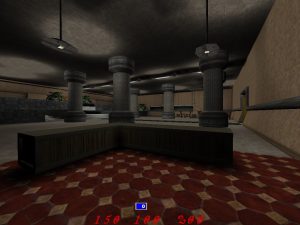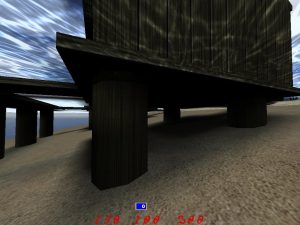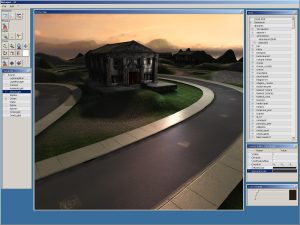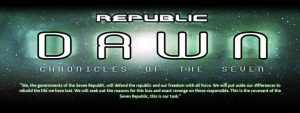End of Nations is a canceled Free-To-Play Massively Multiplayer Online Real-Time Strategy game, which was later a Multiplayer Online Battle Arena game, published by Trion Worlds and developed by Petroglyph Games from 2009 to 2013, exclusively for PC.
This project between Petroglyph and Trion Worlds was first mentionned in April 2009 by its publisher, as we can read on Gamespot:
(…) Trion World Network has announced that it has partnered with Petroglyph on an as-yet-to-be-named massively multiplayer online real-time strategy game.
Aside from talking up the Petroglyph team’s previous work on such titles as Command & Conquer and Dune II, Trion revealed no relevant gameplay details about the upcoming project. However, Petroglyph appears to be taking an ambitious approach to the project, with Trion CEO Lars Buttler saying of the game that it will be “the world’s first truly high-end MMORTS.”
The game was officially revealed in April 2010:
Trion’s MMORTS collaboration with Petroglyph is also expected to arrive for the PC next year. Titled End of Nations, the RTS features a persistent online world in which gamers can engage in solo or multiplayer combat with “thousands of other gamers across the gigantic battlefields.”
Details on Petroglyph’s latest effort remain light. However, Trion did note that players will be able to develop their own commanders and establish a headquarters. Gamers will also be able to unlock new vehicles, weapons, and technologies through combat, as well as crafting and researching.
Further details about its background emerged later:
We are introduced to the universe of End of Nations with a synopsis of the events leading up to the present conflict. 50 years into the future, a worldwide economic crisis and collapse has resulted in a cascade of shortages and conflicts. This coincided with the failure and dissolution of almost all of the world’s governments. As the world descended into anarchy, a savior emerged. The United Nations stepped in to restore order through aid and military force. The public reaction to this was initially enthusiastic. As the governments of the world had failed, the United Nations, now renamed the Order of Nations (ON), became the sole government of the world. To the shock and horror of the populace, this new government began to abduct people in the middle of the night and execute its citizens for asking questions. As a result of this oppression, resistance movements emerged.
When the game begins, the resistance has been underway for quite some time. The Liberation Front, led by American war hero General Alec Chase, and the Shadow Revolution, led by former Order of Nations assassin Monkh Erdene, are part of the Coalition, an alliance against the Order of Nations. The commander controls part of the Coalition forces sent to assault the Typhoon Cannon, a massive artillery turret, at the Order of Nations base at Widow’s Wall. The leader of the Order of Nations, General Sevastian Korvus, is also present, residing within the Typhoon Cannon. The assault on the Typhoon Cannon is successful. The cannon is destroyed and Korvus is killed. Yet, the allies bicker. With the destruction and collapse of the Typhoon Cannon, there is now a giant breach in Widow’s Wall. Alec Chase of the Liberation front wishes to advance further into the base, but Monhk Erdene of the Shadow Revolution counters that their coalition has captured the Siege Cortex and that further advance into the base is not part of the mission. Land battleships from the Order of Nations, known as Assault Panzers, approach from both sides of the breach outside the wall. General Chase asks Monkh to engage the enemy forces so that he can assault the inner base. Monkh apologizes to Chase, reiterates that it was not part of the mission, and the Shadow Revolution forces withdraw. Outflanked and without sufficient support, General Chase is forced to withdraw as well, sustaining casualties in the process. Allies no more, the Liberation Front and Shadow Revolution continue to fight the Order of Nations while also fighting and sabotaging each other for control of territories and influence over populaces. And thus the stage was set for further conflicts between the three factions.
Factions
There are three factions in End of Nations. Two of those are playable; the Liberation Front and the Shadow Revolution. The third faction is the unplayable computer controlled Order of Nations, the main antagonist of the game.
Liberation Front – Increasing chaos led the world leaders to give up control to the Order. The Lord Chancellor of England, Mary Dickinson, refused to give up control of her people. She decided to fight against this regime, and began distributing a digital pamphlet codenamed “The Sentinel”. She began to coordinate these dissidents. The Liberation Front believes that people should be free to elect their leaders and form their own governments. They will go to the grave to fight for this right. The Liberation Front has two classes: Spartan and Patriot, each with their own advantages and special abilities. The Spartan is all about heavy armor and point defense. The Patriot class is more of a support class, and with their support powers, they are able to greatly influence the battlefield.
Shadow Revolution – A few people believe that the new regime’s oppression of the people was far too violent. These dissidents were killed, including Donald Poole who oversaw the rule of Eastern Europe. His son, Robert Poole, and Sabal Dasgupta came together and secretly formed an army of their own known as the Shadow Revolution. As former members of the Order of Nations, they arm themselves with weapons and technology stolen from their former organization, along with knowledge of the inner workings of the Order. They are trying to realize Pierre Frenay’s vision of a firm but benevolent rule. The Shadow Revolution has two classes, the Wraith and Phantom classes, each having their own advantages, and special abilities. The Wraith class is all about fast hit-and-run tactics. The Phantom class is all about stealth tactics and ambushes.
Order of Nations – Perverted from one man’s dream of a peaceful world government, the Order of Nations rules the globe with violence, oppressing the masses and crushing any in their path. The Order possesses extremely advanced weapons systems, developed using siphoned off money and resources, in hopes of creating an army dedicated to establish a one world order. This army was advanced and powerful enough to overwhelm the militaries of the world’s nations and take control with ease. Order of Nations is the AI controlled, third faction in End of Nations. Order of Nations units can be seen in most PvE and some PvP maps. Order of Nations units and buildings have darker color scheme than Liberation Front or Shadow Revolution.
During its development at Petroglyph, the title was showed numerous times at the press, during E3 2010, Gamescom 2010 and E3 2011, and Gamespot was able to write several previews for the game:







![Ramayan 3392 A.D. [PS3,PC – Cancelled] Ramayan 3392 A.D. [PS3,PC – Cancelled]](https://www.unseen64.net/wp-content/uploads/2022/07/ramayan-3392-ad-17-2-670x300.jpg)